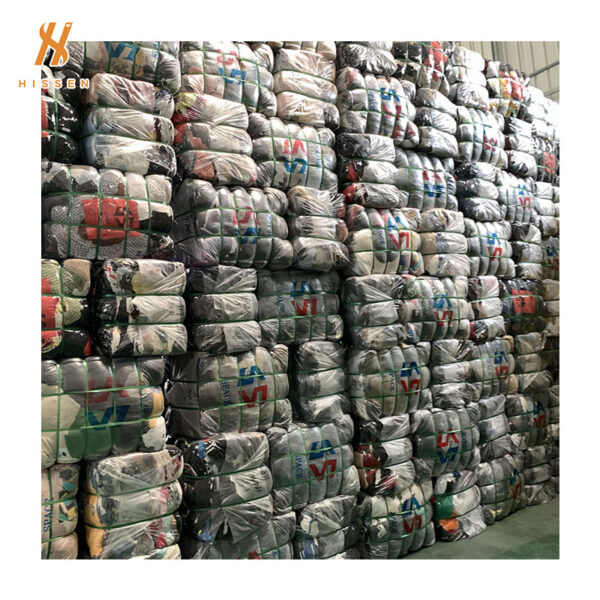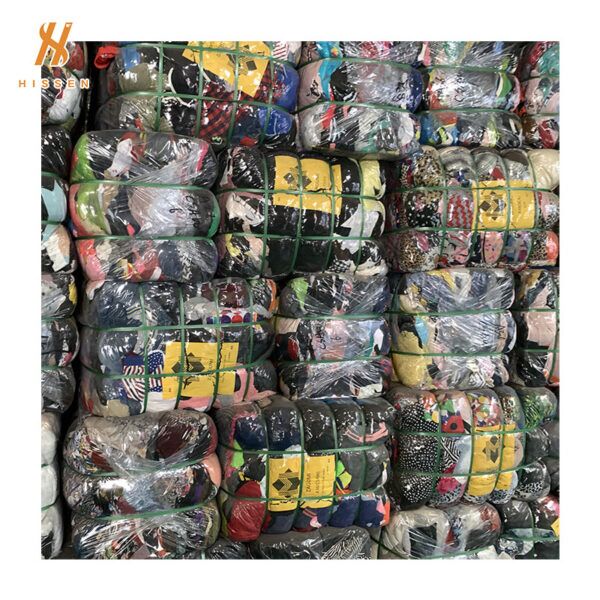The second hand clothing market has seen a significant rise in popularity in recent years. This trend is driven by a combination of factors, including the increasing awareness of environmental sustainability, the allure of unique and vintage fashion items, and the economic advantages of purchasing pre-owned clothing. As consumers become more conscious of their buying habits, the demand for high-quality second hand clothing continues to grow. This article aims to explore some of the countries renowned for producing the best second hand clothes, examining the criteria that make these markets stand out.
Criteria for Evaluating Second Hand Clothes
When evaluating the quality of second hand clothing, several criteria come into play:
- Quality of Clothing Items: The durability and condition of the garments are crucial. High-quality second hand clothes should be well-maintained and free from significant wear and tear.
- Variety and Uniqueness: A diverse selection of clothing, including vintage and designer pieces, enhances the appeal of second hand markets.
- Pricing and Affordability: Competitive pricing is essential, offering consumers a cost-effective alternative to buying new clothes.
- Availability and Accessibility: The ease of finding and purchasing second hand clothes, whether through physical stores or online platforms, is a significant factor.
- Sustainable and Ethical Practices: The focus on environmentally friendly and ethical business practices is increasingly important to consumers.

Top Countries Known for High-Quality Second Hand Clothes
United States
The United States is a leading market for second hand clothing, thanks to its extensive network of thrift stores, consignment shops, and online platforms. American consumers have a strong affinity for vintage and branded items, making thrift shopping a popular activity.
- Overview of Thrift Stores and Consignment Shops: Chains like Goodwill, Salvation Army, and Buffalo Exchange offer a wide range of clothing options.
- Popularity of Vintage and Branded Items: The demand for unique, high-quality items drives the market, especially in major cities.
- Key Cities and Regions: New York, Los Angeles, and Austin are hotspots for second-hand shopping, each offering a unique blend of vintage and designer clothes.
United Kingdom
The UK boasts a rich history of fashion and textiles, reflected in its vibrant second-hand clothing market. Charity shops and vintage boutiques are abundant, offering a mix of affordable and high-end items.
- Rich History of Fashion and Textiles: The UK’s fashion heritage contributes to the variety and quality of second hand items available.
- Prominent Charity Shops: Organizations like Oxfam, British Heart Foundation, and Cancer Research UK operate numerous shops across the country.
- Key Cities: London, Manchester, and Edinburgh are known for their thriving second-hand clothing scenes.
Japan
Japan’s second hand clothing market is characterized by its unique street fashion and meticulous care for garments. Japanese consumers often maintain their clothes in excellent condition, making second hand items highly desirable.
- Unique Street Fashion and Vintage Culture: Japan is famous for its eclectic fashion sense, with second hand stores catering to diverse styles.
- High-Quality, Well-Maintained Items: Attention to detail and care for clothing ensure that second hand items are in excellent condition.
- Key Areas: Tokyo, Osaka, and Harajuku are renowned for their vibrant second hand clothing markets.
Germany
Germany places a strong emphasis on sustainable fashion, with a well-established second-hand clothing market. Flea markets and second hand boutiques are popular, offering a variety of stylish and affordable options.
- Emphasis on Sustainable Fashion: Germany’s commitment to sustainability is evident in its thriving used clothing market.
- Numerous Flea Markets and Boutiques: Cities across Germany host regular flea markets and are home to numerous second-hand stores.
- Key Cities: Berlin, Hamburg, and Munich are key locations for second-hand shopping.
Sweden
Sweden is a leader in sustainable fashion initiatives, with a well-curated selection of second-hand shops and online platforms. The country’s focus on sustainability and high fashion standards makes it a top destination for second-hand clothing.
- Leading in Sustainable Fashion Initiatives: Sweden’s emphasis on sustainability drives its second hand clothing market.
- Well-Curated Shops and Platforms: Swedish second hand stores and online platforms offer high-quality, stylish items.
- Key Cities: Stockholm and Gothenburg are major hubs for second-hand fashion.
China
China’s second-hand clothing market is rapidly growing, influenced by urbanization and changing consumer attitudes. The increasing acceptance of second hand fashion is driving demand, particularly in major cities.
- Rapidly Growing Market: China’s second hand clothing market is expanding quickly as consumer attitudes shift.
- Influence of Urbanization: Urban areas see higher demand for second hand fashion due to lifestyle changes.
- Main Citys: Beijing, Shanghai, and Guangzhou are leading the way in the second hand clothing market.
India
India is experiencing a growing acceptance and popularity of second hand fashion. With the rise of online platforms and thrift stores, secondhand clothing is becoming more accessible to consumers across the country.
- Growing Acceptance and Popularity: Indian consumers are increasingly embracing second-hand fashion.
- Online Platforms and Thrift Stores: The rise of e-commerce platforms and thrift stores is making second-hand clothing more accessible.
- Key Cities: Mumbai, Delhi, and Bangalore are central to this emerging market.
South Korea
South Korea’s fashion scene is heavily influenced by K-fashion, with a growing thrift culture. Vintage shops and flea markets are becoming popular, especially among younger consumers.
- Influence of K-Fashion: South Korean fashion trends significantly influence the second-hand clothing market.
- Increasing Number of Vintage Shops: The popularity of vintage and second-hand shops is on the rise.
- Key Areas: Seoul and Busan are leading cities for second hand fashion.

Benefits of Buying Second Hand Clothes
- Environmental Impact: Purchasing second hand clothes reduces textile waste and lowers the carbon footprint associated with clothing production.
- Economic Advantages: Second hand clothing is often more affordable than new items, offering significant savings. Additionally, it supports local businesses and charities.
- Fashion Diversity: Second hand markets provide access to unique and rare items, allowing individuals to create personal and distinctive styles.
Tips for Finding the Best Second Hand Clothes
- Research and Locate Reputable Shops: Look for well-reviewed stores and online platforms.
- Inspect Items Carefully: Check for quality and condition before purchasing.
- Understand Pricing: Be aware of fair pricing and negotiate when possible.
- Participate in Online Marketplaces: Explore websites and apps dedicated to second-hand clothing.
- Embrace the Hunt: Be patient and enjoy the process of finding unique pieces.

Conclusion
By exploring these markets and supporting sustainable practices, individuals can make a positive impact on the environment while enjoying the benefits of diverse and distinctive wardrobes. Whether you’re a seasoned thrift shopper or new to the world of second hand fashion, these countries provide excellent opportunities to find the best second hand clothes.
Discover more from Life and Tech Shots Magazine
Subscribe to get the latest posts sent to your email.